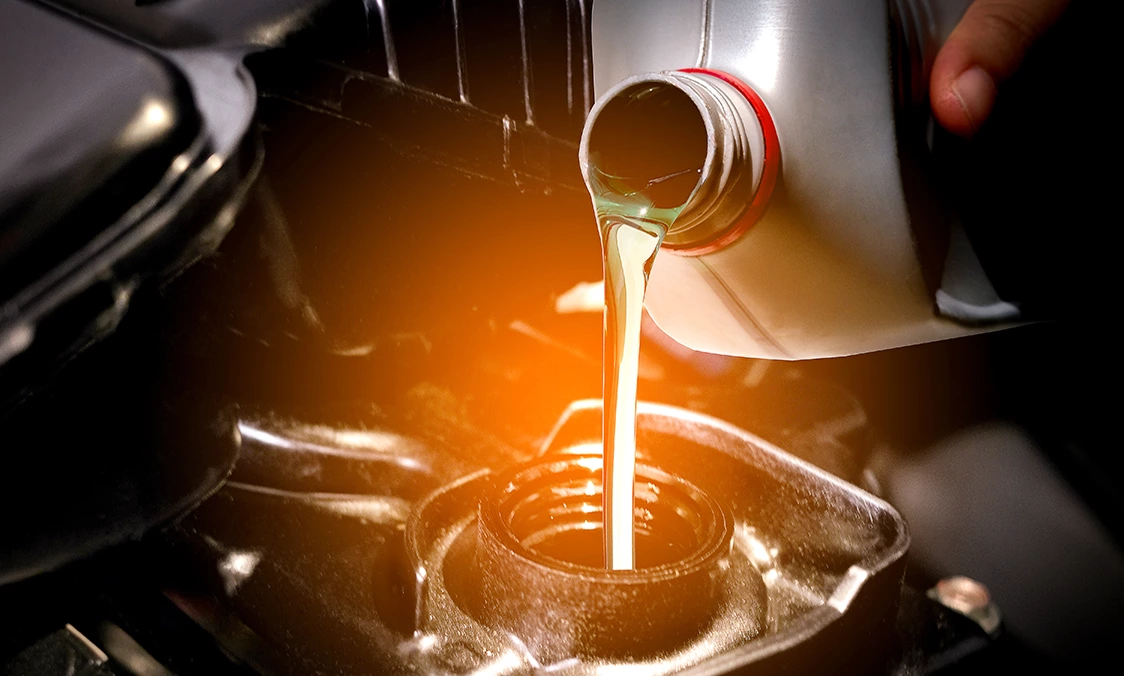This page provides answers to some of the most frequently asked questions about vehicle repair and service. We've thrown in some of our favorite tips and recommendations, too. Please call us or consult our Contact Us page for answers to your specific questions. We are happy to assist you!
Tires
-
How much air should I put in my tires?
Proper inflation is the single most important part of tire care. Check or adjust inflation every few months and always use the inflation recommended by the vehicle manufacturer. Checking air pressure should be standard procedure on any routine visit to your vehicle service center for oil services, tire rotations, or general maintenance and repair.
For do-it-yourselfers you can find this information in your owner's manual, posted on the edge of the driver's door, on a door post, in the center console, or on the inside of the glovebox door. Be sure to check inflation when tires are COLD: when the vehicle has been driven less than a mile or one hour or more after driving. Use a good quality tire gauge. And don't forget to check the spare!
-
Should I rotate my tires?
The main purpose of regularly rotating tires is to achieve more uniform wear for all tires on the vehicle. It is recommended that you rotate your tires at least every 6,000 to 8,000 miles or uneven wear may develop. At strongly tire-oriented facilities this is a service typically done at no additional cost; along with free flat repairs, Nitrogen inflation, and an undercar inspection.
Vehicle Maintenance
-
Why does my vehicle's maintenance schedule recommend so many fuel system services?
Modern engines have long abandoned carburetion with its many parts destined for failure in favor of simple and direct electronic injection of fuel. No longer are we shackled with the necessity of constant adjustment or repair. A properly maintained fuel delivery system today offers much improved reliability and efficiency than those systems of old.
Millions of cars today run at a level of efficiency considerably reduced, due to the high concentration of carbon deposits accumulated in the fuel injection system, intake valves, combustion chambers, oxygen sensor and catalytic converter. Carbon build-up clogs fuel filters, reduces fuel flow, distorts fuel spray patterns, limits fuel automation and decreases combustion efficiency.
Carbon build-up gradually robs your vehicle of performance and fuel economy, and may cause numerous problems such as engine malfunction, high emissions, excessive fuel consumption, loss of performance, rough idling and hard starts. Simply infusing an additive into a gas tank will not adequately decarbonizes injectors, cylinder heads, valves, intake plenums, exhaust emission sensors, and other critical components.
-
What are all of the chemicals and fluid flushes for? Are they really necessary?
Protecting the vital wear points of your vehicle with quality lubricants will vastly improve service life and will provide optimum efficiency. Today’s properly maintained vehicles with 100,000 miles no longer consume oil and break with high frequency. Chemistry has played an important role. The right chemicals can restore the ph balance in radiators so that acidity will not degrade hoses and internal metals in radiators and coolers. Other chemicals such as transmission flush chemicals along with pulse flush equipment rinse the oxidation from the valves and other internal workings of transmissions.
Vehicle Fluids
-
I see a fluid leak under my car, what is it?
You can identify fluids by their color and consistency:
• Yellowish green, pastel blue or florescent orange colors indicate an overheated engine or an antifreeze leak caused by a bad hose, water pump or leaking radiator.
• A dark brown or black oily fluid means the engine is leaking oil. A bad seal or gasket could cause the leak.
• A red oily spot indicates a transmission or power-steering fluid leak.
A puddle of clear water usually is no problem. It may be normal condensation from your vehicle's air conditioner.
-
I have a leak under my car. How can I tell what is leaking?
The coloring of the liquid identifies the type of liquid. Coolant Fluid is orange or green, Engine fluid is Brown or Black, Transmission Fluid is Red or Pink, Power Steering Fluid is Light Brown, Differential Fluid- Brown. depending on the leak it could mean trouble, don't wait until it's too late!
Oil Change
-
How often should I change my oil?
Most car manufacturers say to change your oil every 7,500 miles unless you drive in severe conditions. Severe conditions are defined as dirty or dusty roads, extremely hot or cold climates, a lot of stop and go driving, taking long trips or if you tow a trailer. If you answer yes to any of the severe driving conditions, your vehicle falls into the severe conditions category, or the 3,000 mile oil change interval.
-
What is that milky brown engine oil?
Milky brown engine oil is an indication of coolant in the oil. This can be caused by a blown head gasket (other gasket), a failed transmission cooler, or cracked casings. This condition is very serious and needs to be checked by a professional technician quickly.
-
What is synthetic motor oil?
Synthetic motor oils can be a good choice for high output, turbocharged or supercharged engines, vehicles that are used for towing (especially during hot weather), or vehicles that are operated in extremely cold or hot climates.
Synthetic motor oils, though several times more expensive than mineral-based motor oils, can improve fuel economy and provide longer intervals between changes. They also provide instant lubrication on start-up.
Fuel System
Improving Gas Mileage
-
How can you increase fuel mileage?
To optimize gas mileage, check tires for proper inflation, make sure wheels are in alignment, check and replace filters, change Your oil regularly, keep your engine properly tuned, empty out your trunk of unnecessary items, observe the speed limit. These seemingly minor adjustments to your driving and maintenance habits can save on gas--and money!
Cabin Air Filters
-
What is a Cabin Air Filter?
Cabin air filters filter the air that comes from the outside of a vehicle into the passenger compartment. They were originally designed to remove solid contaminants like dust and soot from circulating inside the vehicle. These filters can now also absorb gases and odors. Cabin air filters may also be known as passenger compartment filters, pollen filters, or dust filters.
-
Why are Cabin Air Filters important?
Air quality is becoming a major concern for many people - outdoors, in our homes, and now even in our automobiles. An estimated 50 million Americans suffer from hay fever and other allergy-related problems.
-
How often should they be replaced?
Vehicle manufacturer recommendations may vary, but the general guideline for replacing cabin air filters is every 12,000 to 15,000 miles, or at least once a year.







